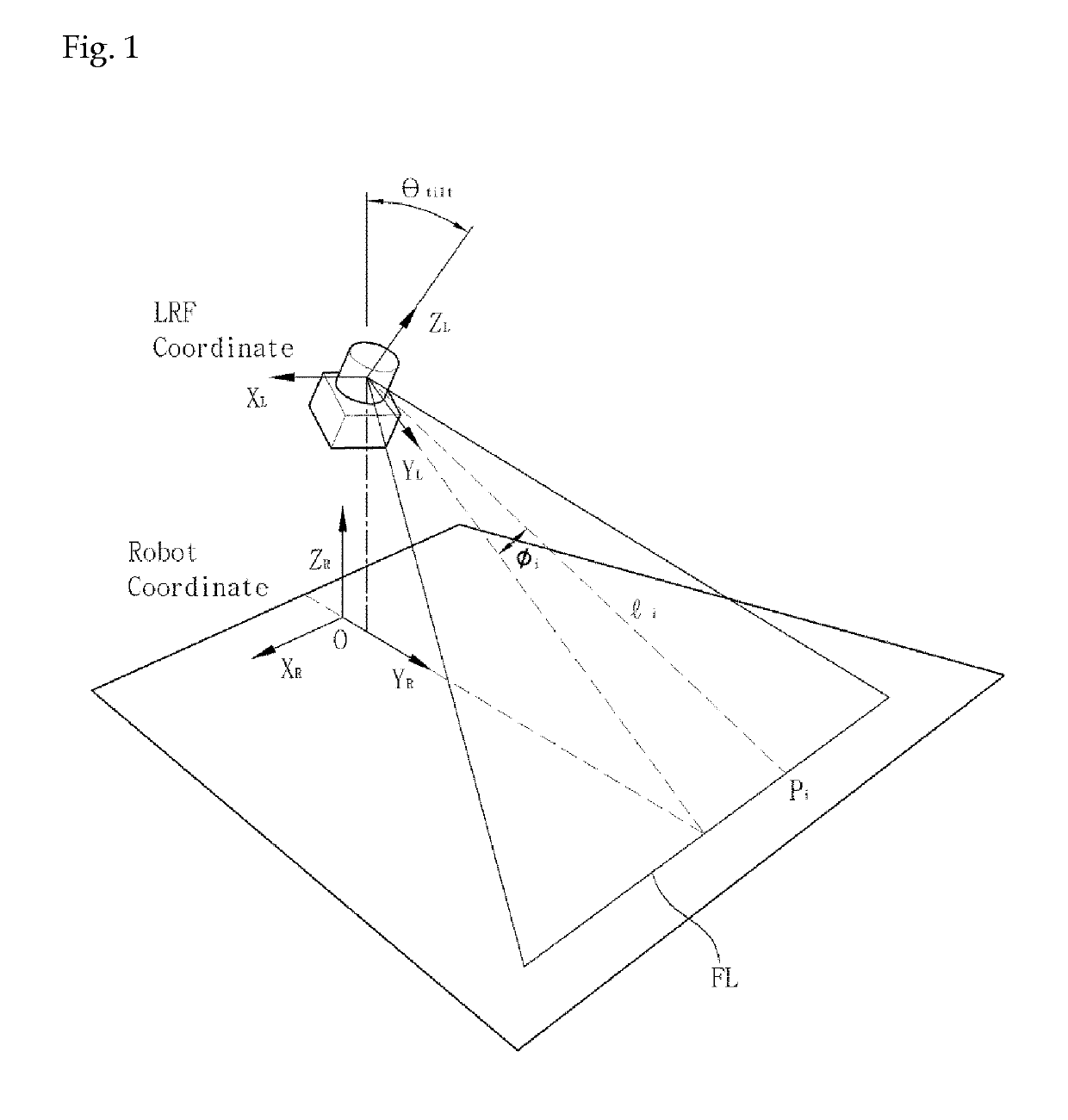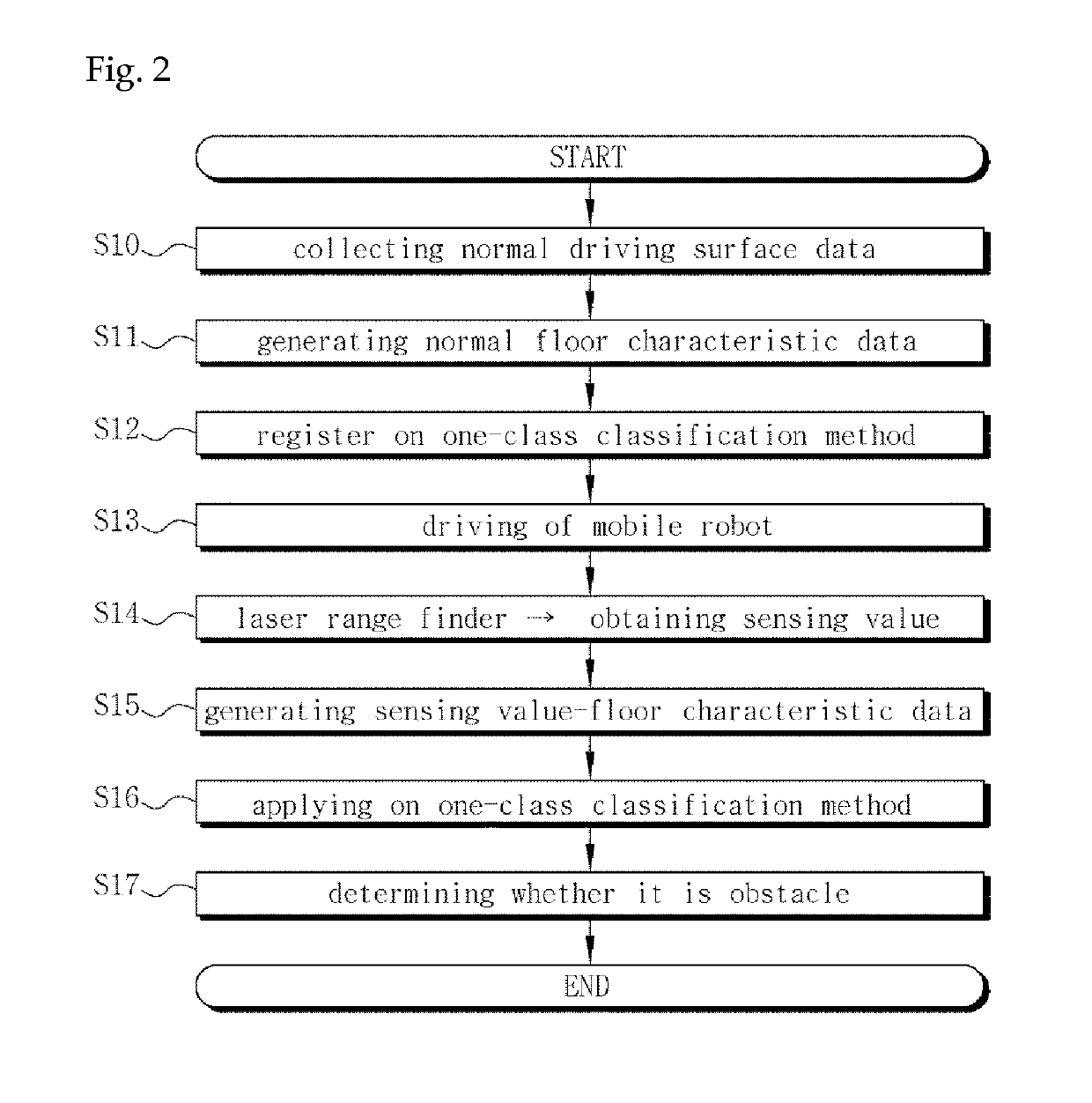Method for detecting floor obstacle using laser range finder
a laser range finder and floor obstacle technology, applied in the direction of vehicle position/course/altitude control, using reradiation, instruments, etc., can solve the problems of difficult analysis of data, limited detection range in the indoor environment, and limited size of the obstacle which can be detected, so as to achieve more stably acquiring a drivable area and effective detection
- Summary
- Abstract
- Description
- Claims
- Application Information
AI Technical Summary
Benefits of technology
Problems solved by technology
Method used
Image
Examples
Embodiment Construction
[0038]Hereinafter, embodiments according to the invention will be explained in detail referring to the attached drawings.
[0039]FIG. 1 shows a coordinate frame structure of a mobile robot and a laser range finder according to the present invention. In an example of the present invention, 2D laser range finder is used as the laser range finder and the distance is determined by detecting a laser which is incident forwardly at a predetermined angle and then is reflected back.
[0040]Referring to FIG. 1, the laser range finder is installed on the mobile robot at an inclination angle θtilt to a floor. An ith measurement point pi of the laser range finder has sensing values of a distance li from the laser range finder and an angle φi.
[0041]FIG. 2 shows a method of detecting a floor obstacle using a laser range finder according to the present invention.
[0042]First, normal floor characteristics data with regard to a flat normal driving surface having no floor obstacles is generated (S11). In a...
PUM
 Login to View More
Login to View More Abstract
Description
Claims
Application Information
 Login to View More
Login to View More - R&D
- Intellectual Property
- Life Sciences
- Materials
- Tech Scout
- Unparalleled Data Quality
- Higher Quality Content
- 60% Fewer Hallucinations
Browse by: Latest US Patents, China's latest patents, Technical Efficacy Thesaurus, Application Domain, Technology Topic, Popular Technical Reports.
© 2025 PatSnap. All rights reserved.Legal|Privacy policy|Modern Slavery Act Transparency Statement|Sitemap|About US| Contact US: help@patsnap.com



